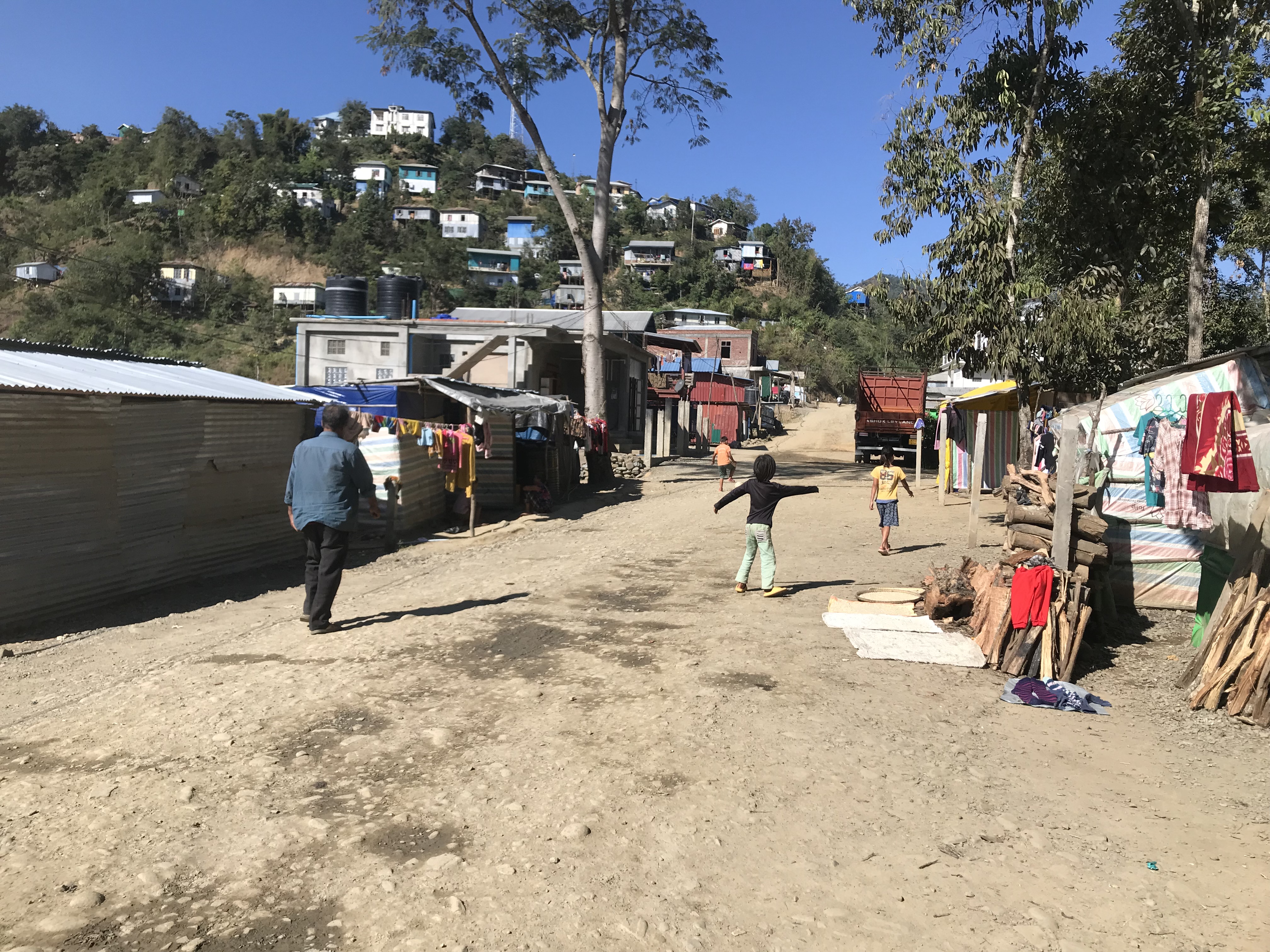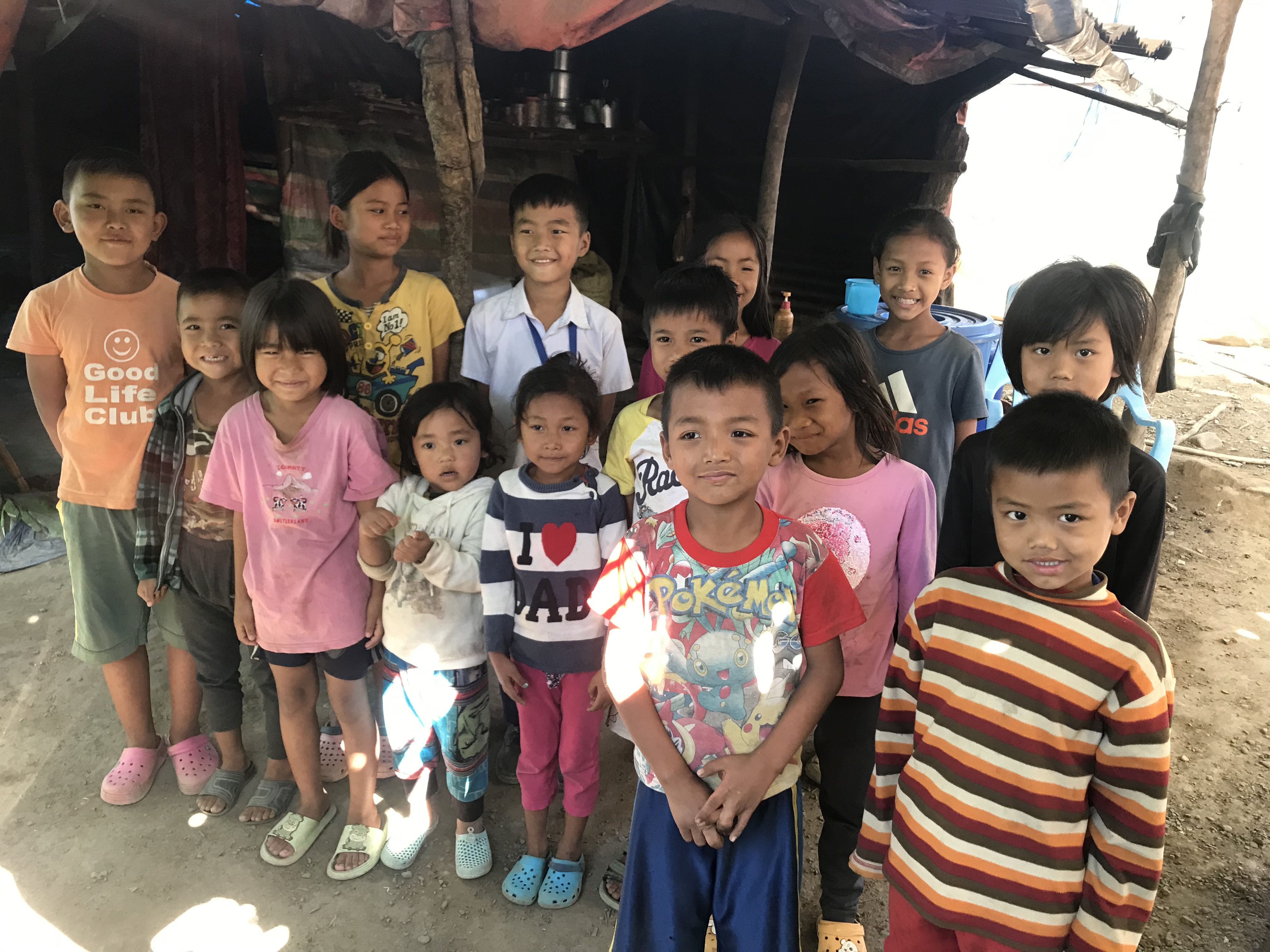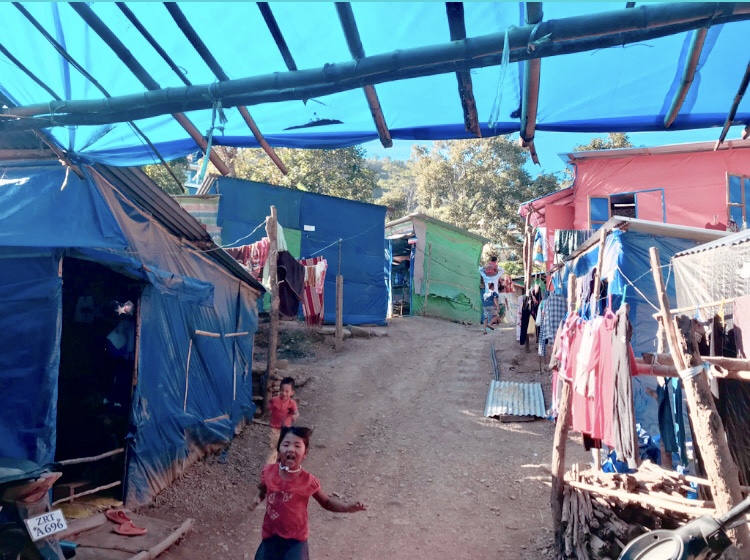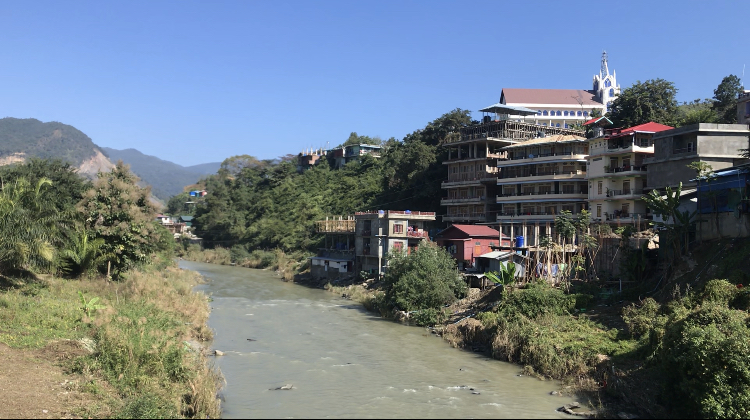
Mizoram, India – “Why are you screaming? You are a refugee,” a nurse told 26-year-old Jamie* as she struggled with an exceptionally painful childbirth at a hospital in India’s northeastern state of Mizoram.
A few hours later, amid her agony, Jamie’s baby Sophia was born – joining a growing group of other stateless babies born to Myanmar parents seeking refuge in Mizoram.
It has been two years since Jamie and her husband fled Myanmar after the 2021 military coup and arrived in Champhai, a bustling town in Mizoram, 320km (199 miles) from the Myanmar border.
Myanmar was no longer safe for the young couple, but life across the border has not been what they had hoped for.
“Sophia was not given a birth certificate. They say we need an Indian voter’s ID, something we cannot get since the country has also not given us a refugee ID,” Jamie says.
“So now Sophia is stateless. She was given vaccines and we can take her to the doctor but she doesn’t have a citizenship status. We have to go back to Myanmar and try to get it for her.”
Placing a gentle kiss on her daughter’s forehead, Jamie says all she hopes is for her two-month-old daughter to become a citizen of a country.
Historically, India has been a welcoming home to people across faiths fleeing persecution, from Parsis centuries ago, to Tibetans (from 1959), Bengalis from Bangladesh (in 1971), Afghans across three wars, Sri Lankan Tamils, people from Myanmar and also Africa. During the Holocaust, an estimated 5,000 persecuted Jews from Europe came to India and made it their home, at a time when the United States turned many from the community away.
But the country lacks a national refugee law and is also not a signatory to the United Nations 1951 Refugee Convention – a protocol outlining the international standards of treating and protecting people seeking refuge.
This has left many people seeking asylum in India, in limbo.

Different rules
An hour’s drive away from Champhai, at a refugee camp in the picturesque Indian border village of Zokhawthar, which is separated from Myanmar by the Tiau river, 30-year-old Ruati also awaits a refugee card – an identity document that would give her access to food, education, healthcare and other facilities that either the host country or the United Nations provides.
She fled Myanmar in 2021 on a scooter with her family. After living in the refugee camp for more than two years, she yearns to work and earn a living. But there’s a problem.
“We want to work but cannot since India is not giving us a refugee card,” she says. “We’re surviving on food and other donations given to us by the state government and NGOs and groups in Mizoram like the Young Mizo Association.
“I used to live and work in China before 2021 and worked there cleaning houses. So for now, I have savings but it won’t last long. But using my savings, I have bought some snacks and drinks in the Myanmar market, and sell them in the camp to make more money.”
Hui Yin Chuah, research officer at the Mixed Migration Centre (MMC) in Asia and the Pacific, says that refugee-related policies in India lack a comprehensive domestic legal framework, leading to an ad hoc approach to addressing these issues.
“Currently, a two-track mechanism is in place for asylum seekers: Sri Lankan and Tibetan refugees are registered under the Ministry of Home Affairs, while displaced individuals from other countries, including Afghanistan and Myanmar, must register with the UN’s refugee agency (United Nations High Commissioner for Refugees),” Hui Yin Chuah says.
However, the UNHCR is not operational in Mizoram. Instead, the state government is issuing identity cards. That, however, does not let people use government services and requires refugees to give up their Myanmar citizenship, Ruati says, making it hard for her to return to her home country – something she yearns to do if the military government’s rule ends.
“The ambiguity (or lack thereof) of a refugee legislation also allows for manoeuvring, as seen in the case of states like Mizoram,” Hui Yin Chuah says.

Why hasn’t India signed the UN refugee convention?
In 1951, when the UN agreed on a refugee convention after the second world war, India was only newly independent and the trauma of the partition was still recent. The country’s prime minister at the time, Jawaharlal Nehru, refused to sign the convention, citing security concerns – a sentiment which continues.
The 1951 Refugee Convention was bolstered by a protocol in 1967 to ensure protection for refugees globally. Together, the two documents set the foundation for the UNHCR’s work by defining who a refugee is, what their rights are and how their rights should be protected from persecution.
Currently, 146 countries are party to the 1951 convention and 147 to the 1967 protocol.
Colin Gonsalves, human rights lawyer at the Supreme Court of India and the founder of the Human Rights Law Network (HRLN) says that there have been regular discussions for years within India’s legal and human rights communities regarding India’s need to join the UN’s refugee convention. But the current BJP government of Prime Minister Narendra Modi has no intention of joining it at all, he says.
“This is for the simple reason that they [the government] are anti-Muslim, racist and anti-minority. So these overtones make it impossible for any convention to be filed. The Congress government who were in power earlier were equally shortsighted,” Gonsalves says. “So no UN convention coupled with the lack of a national refugee law, has led to increased discrimination against refugees.”
Tibetans, starting with the Dalai Lama, who entered India in 1959, have received formal refugee status. Since 2014, the Modi government has given them voting rights. Tibetans have their own schooling system recognised by the government of India.
“On the other hand, the government has not agreed to protect the rights of the Rohingya from Myanmar, who are also fleeing religious persecution and continues to discriminate against them,” Gonsalves says. “Muslim Afghans also have a tough time in India compared to Hindu Afghans because of their religion.”
Prosperity with a caveat
In a recent interview with the Financial Times, Modi insisted that there is no religious discrimination towards any individual seeking refuge in India.
Highlighting how Parsis in India have been treated, Modi said: “Despite facing persecution elsewhere in the world, they have found a safe haven in India, living happily and prospering … That shows that the Indian society itself has no feeling of discrimination towards any religious minority.” India’s dwindling Parsi community – there are only about 50,000 left today – is among its most economically successful. The Tata, Wadia and the Mistry families are among India’s wealthiest.
Yet none of that helps more recent asylum seekers like Ruati. Legally, India is not bound to accept and recognise UNHCR-issued refugee IDs since it is not a signatory to the 1951 convention or the 1967 protocol, though “in general it respects the principle for holders of UNHCR documentation,” according to the UN agency.
“We continue to collaborate closely with the Government of India to address the essential needs of the most vulnerable refugees registered with UNHCR,” says Babar Baloch, UNHCR spokesperson for Asia.
But he adds that refugees and asylum seekers in India are unable to use social protection schemes due to the requirement of having an Aadhar card – a social and public welfare identity document in India. To get an Aadhar card, applicants need other government-issued identification documents.
“Without government-issued documentation, refugees and asylum seekers are unable to benefit from the government’s social protection programmes,” Baloch said.
Currently, the UNHCR operates in 11 locations across India including the capital, New Delhi, in the north, and Chennai in South India. However, in northeast India, where the UNHCR currently does not have access, state governments have shown a degree of support.
“In Zokhawthar and Champhai the state government gives us donation-based food and shelter because they say we come from the same tribe as the locals and share strong cultural ties. So they don’t consider us foreigners,” Ruati says. “But a refugee card will make us happier.”
Gonsalves notes that it is clear the Indian government has put restrictions in the UN’s way but adds that the UNHCR in India should “be a little bit more combative and assertive”.
“Once you get the refugee card, it opens doors for people seeking asylum. So the UN should put their foot down and tell the government that it is their mandate to function across the country and give refugee cards to everyone. It is a matter of brinkmanship for the UN agency.”
According to Baloch, “any asylum seeker, irrespective of their background, who wishes to register with UNHCR” can approach the agency for registration.

Because ‘we are Muslims’
Sabber Kyaw Min, founder and director of the Rohingya Human Rights Initiative, who also came to India seeking refuge from Rakhine state in Myanmar, has been issued a UNHCR refugee card in New Delhi. But he says it gives him no rights and discrimination continues.
“The conditions of our settlements are sordid. Women have no access to healthcare, our children are not allowed to go to schools in India, and even locals in the country keep attacking our homes,” he says.
He highlighted that the Indian government also threatens NGOs who try to support the Rohingya people.
“I think it has to do with the fact that we are Muslims. And because there is no refugee law, we cannot even fight for our rights and contest our cases against the government,” Sabber Kyaw Min adds.
Some 22,000 Rohingya are currently registered with the UNHCR, according to the UN’s Baloch.
India’s ruling Bharatiya Janata Party (BJP) government has often taken a harsh stance towards them, with the home ministry also announcing last year that the Rohingya with UNHCR refugee cards in Delhi would be kept in detention centres and then deported since they are “illegal foreigners”, under the country’s Foreigner’s Act.
The country has already deported some Rohingya refugees to Myanmar according to rights groups. But currently plans for more deportations have been held up by the Supreme Court.
Is the Indian Constitution protecting refugees?
Gonsalves argues that the Indian Constitution does not allow the deportation of refugees.
“No refugee can be deported because our constitution protects not only citizens, but all those within the territory of India through Article 21, which obliges the state to protect the life and liberty of anyone within the territory. So the government is obliged to protect the lives of Rohingya,” Gonsalves says.
In 2019, the Modi government also passed the Citizenship Amendment Act (CAA) which it said would fast-track citizenship to undocumented Hindus, Sikhs, Buddhists, Jains, Parsis and Christian immigrants from countries such as Pakistan, Bangladesh and Afghanistan. But Muslim refugees and asylum seekers were kept out, sparking protests across the country amid fears that India had adopted a religious criterion for citizenship.
“CAA provides a potential pathway to citizenship for refugees based on their religion and nationality, excluding Muslims and minorities from Myanmar,” the MMC’s Hui Yin Chuah says.
Yet even refugees eligible for fast-tracked citizenship have not benefitted so far. Now, recent reports suggest that the Indian government might start implementing the law before the parliamentary elections between March and May this year.
Will India get a refugee law ahead of its elections?
India heads to the polls this year, but Sabber Kyaw Min does not think campaigning leaders will address migration issues – a topic which is often contentious in the West and is in turn widely discussed by leaders, including in their election campaigns.
“What’s happening now in Myanmar is horrible. Until there is peace there, we can’t go back. India is a neighbouring country, and has a responsibility to give our community political support, and discuss migration issues with the UN and globally,” Sabber Kyaw Min said.
Gonsalves does not expect India to expel large numbers of refugees or leave them out at sea, as has happened in the West.
“In practice, the country’s treatment towards people seeking refuge is only harsh and not extreme since migrants are not being pushed back at sea like in the West,” he says.
But he also has few hopes that India will make lives easier for asylum seekers like Ruati.
“I also don’t expect the present or a new government to sign the UN refugee convention any time soon and introduce a refugee law,” he says.
“So our constitution and our courts will continue to step in, giving the kind of protection that the refugee convention gives.”
*Some names have been changed to protect identities.







